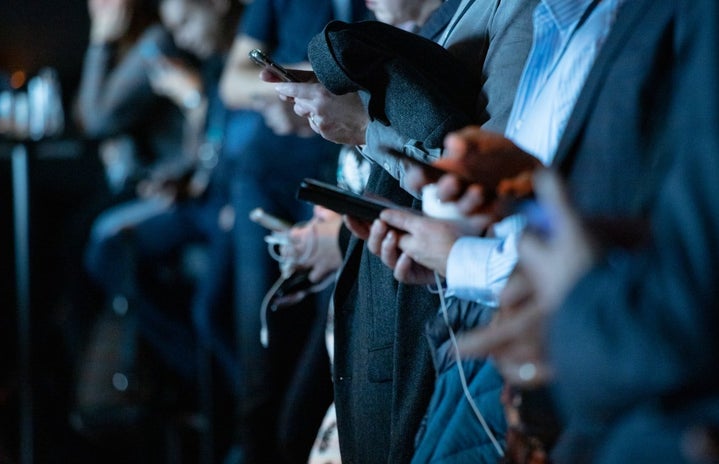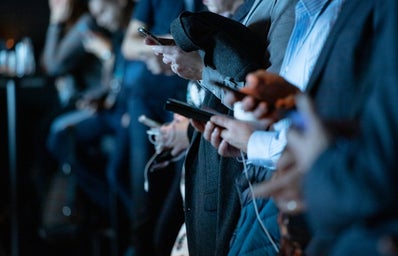In our new virtual world, we’ve all found ourselves staring at a screen for hours on end. From online classes, club meetings, and social events to Facetime, texting, and social media, we’ve never experienced so much screen time, both professionally and socially; between all our electronic devices, just think about how much time we spend each day staring into screens. Needless to say, we’ve all suffered the consequences – burning eyes and pounding headaches after a long days of Zoom and then subsequent TikTok or Netflix binges. Thus, enters the latest trend: Blue Light Glasses.
We must first understand what blue light is and how it affects our bodies. Screens emit blue light, which is theorized to be the cause of dry, irritated, strained, or watery eyes. Blue light is also hypothesized to suppress the body’s production of melatonin, which can interfere with our sleep quality.
The science behind blue light glasses is pretty simple: the glasses have lenses that are meant to filter out blue light and thus protect you from eye strain, headaches, and fatigue.
But do they really work, or are they just the latest fashion statement?
Though this sounds ideal in theory, the evidence proving that blue light glasses actually have this effect is pretty insubstantial. Because the glasses are such a new product, more extensive research will have to be conducted for the science community to actually validate their effectiveness.
While some people swear by the product, adversaries of blue light glasses claim that the blue light itself isn’t what causes eye strain. Rather, it is our overuse of devices. Think about it: if you stare at anything for too long, your eyes will eventually start to bother you. Along with the fact that we tend to blink less when we’re staring at our screens, it’s no wonder that dry eyes are a common malady.
If you want to try out a pair of blue light glasses yourself, you don’t have to break the bank. Once classes started and I found myself constantly rubbing my irritated eyes, I gave in and ordered a pair of my own blue light glasses from Amazon for only about $15. As skeptical as I was when I first started using them, I’m happy to say I am satisfied with my purchase. I’m not completely sure if I have given into a placebo effect or if the glasses really are effective, but either way I’m content. If anything, at least they look stylish!
If you’re hesitant to jump on the blue light glasses bandwagon, there are several other ways to protect your eyes from the strain associated with excessive screen time. For example, many doctors support the 20-20-20 rule – every 20 minutes, you should give your eyes a 20 second break by looking at an object at least 20 feet away from you. It can also help to dim the brightness of your devices and avoid sitting too close to your screen. Finally, if you find yourself having trouble falling asleep at night, it may be a good idea to switch your devices to night mode a few hours before bedtime.
So, the question of whether blue light glasses are merely the latest fashion trend or if they truly combat issues associated with an overabundance of screentime is still to be determined. You’ll just have to see for yourself!


